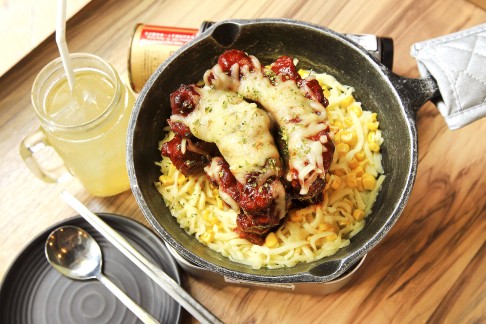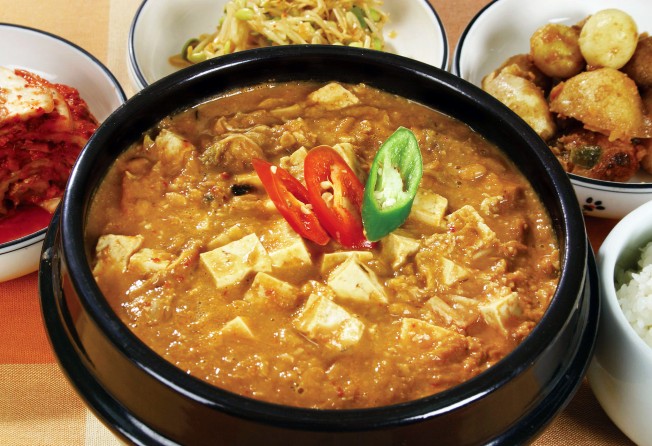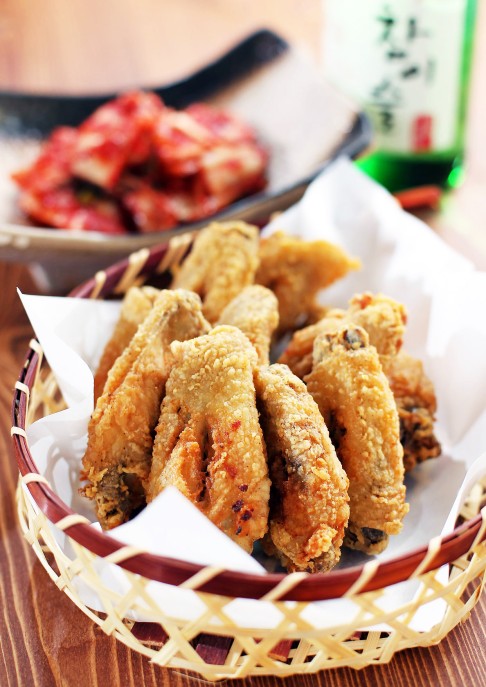
Dishes so Korean most Hongkongers have probably never tried them
Stinky stews, silkworm pupae, blood sausage, and rice cakes are among the homely fare beloved by natives, some of which now appear on Korean restaurant menus in Hong Kong

Last month my Korean family celebrated Father's Day at Jin Luo Bao Korean Restaurant for one key reason - its selection of stinky stews, or jjigae. The cheonggukjang stew is the smelliest of them all and is a rare treat for my mother. The fermented soya bean paste stew with tofu, chillis, zucchini slices and uncrushed soya beans is a pungent classic available in Hong Kong only at this establishment.
Like most fermented fare, the food's assertive aroma is polarising for diners, but for natives accustomed to such qualities this is comfort food as ubiquitous as barbecues in the south of the Korean peninsula.
As much as some Hongkongers love their fried chicken, there remain areas of the Korean menu that are unexplored. It doesn't have to be that way, even if the untried dishes can seem a little off-putting at first.
Other comfort food that non-Koreans might find disconcerting includes beondegi (silkworm pupae). The ingredient is available in cans from Korean grocery stores and is prepared in another stew at restaurants. Try it at any branch of Chicken Hof & Soju (the Korean fried chicken restaurant with outlets in Tsim Sha Tsui and Wan Chai).
Hongkongers are reluctant to order the dish, but for older Koreans it's a reminder of a time when the country was less developed and people were more open to eating whatever was available. Younger Koreans are also not so keen on the dish.
Soondae is another beloved Korean delicacy rarely enjoyed by Hongkongers. It is the Korean equivalent of blood sausage; in Seoul, it is steamed and served with cuts of pork lung and ear or other innards, accompanied with chilli-specked coarse salt.
Available in many Korean restaurants in the city, such as Secret Garden in Admiralty, the sausage is an offal tour de force. In Hong Kong, though, it's served without the meaty toppings.

Bora Kim is a member of the family that runs New World Mart - one of the oldest Korean grocers in the city - and the recently opened Han Spoon on the same street in Tsim Sha Tsui. She says the city is infatuated with all things Korean, and one shouldn't underestimate Hongkongers' familiarity with the latest Korean culinary obsessions. "Nowadays, locals know better than us when it comes to new products and trends in Korea. They often come in with pictures and ask us if we have this or that," says Kim.
According to Kim, the hottest trend in Seoul at the moment is adding cheese to all kinds of food, even traditional favourites such as tteokbokki (cylindrical rice cakes cloaked in a sweet spicy sauce) and budae jjigae (spicy stew with spam, noodles, fish cakes and more).
Try these less conventional Korean dishes at Han Spoon, including tteokbokki with seafood and cheese or the spicy roasted pork ribs with cheese.
To break the monotony of the standard Korean barbecue, Jiwoo Yun, a Korean headhunter, ventures to more modern houses equipped with special combination grills that cook both meat and sides atop the same grill. On the outer tier of these grills are slots to keep side dishes warm.
"Years ago this modern-style Korean barbecue was found around university areas in Korea, but then it grew so popular that now it's served this way in many places in Korea," says Yun.
She recommends trying this fun twist on Korean barbecue at Seorae, which has branches in Tsim Sha Tsui and Causeway Bay.
Mina Park, a self-taught chef and founder of Sook, which has hosted Korean private kitchen feasts and pop-up events at establishments such as Serge et le Phoque, Ping Pong 129 and The Pawn, says the city's Korean dining scene could go even further to reflect the varied culinary repertoire of her homeland.
"The selection here is pretty limited; most of it is the standard barbecue fare and bibimbap, or places offering Korean street food for students or late-night fare such as Korean fried chicken and other junk food," says the American-born Korean.
She says that in New York's Korean dining hotspots on 32nd Street, a more diverse selection is available, including stand-alone operations that specialise in one specific dish, such as Korean dumplings or noodles. "In Hong Kong you don't have that; instead, you have places that serve the greatest hits," says Park.
One of her constant food cravings is tteokbokki. Park prepares her fusion version at her events, with the carbohydrates combined with home-made chorizo, greens such as fresh pea shoots plus lemon zest. It will be served at her upcoming kimchi workshop in August.
To savour the traditional variety, she recommends New World Mart, where tteokbokki is available for takeaway. They also stock dozens of home-made Korean banchan (small plates) such as garlic stem kimchi and spicy fermented baby squid.
